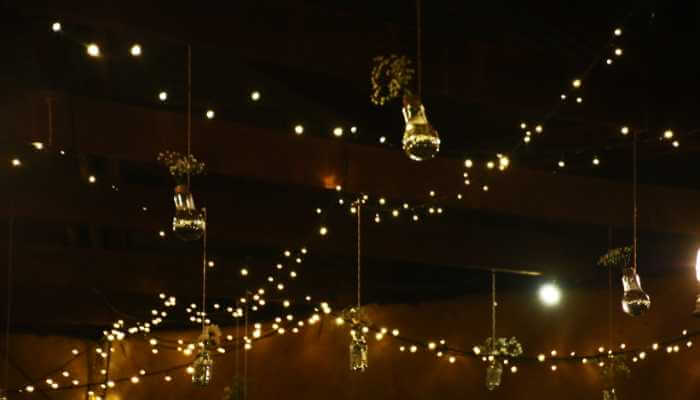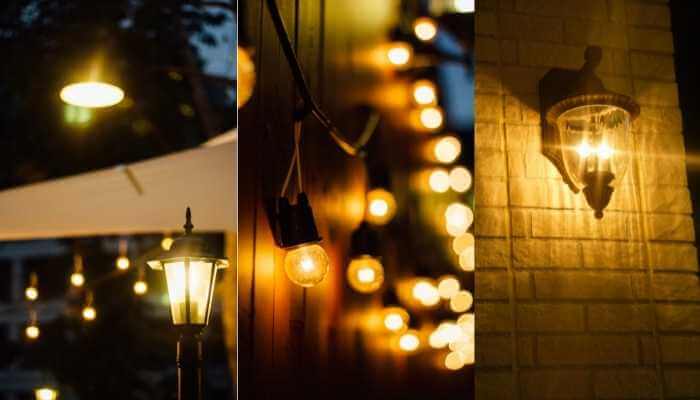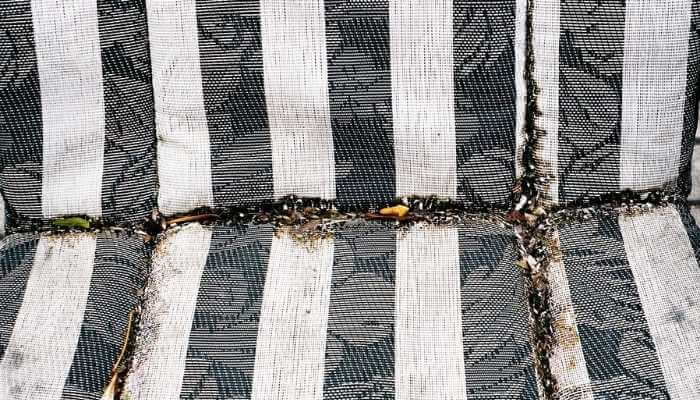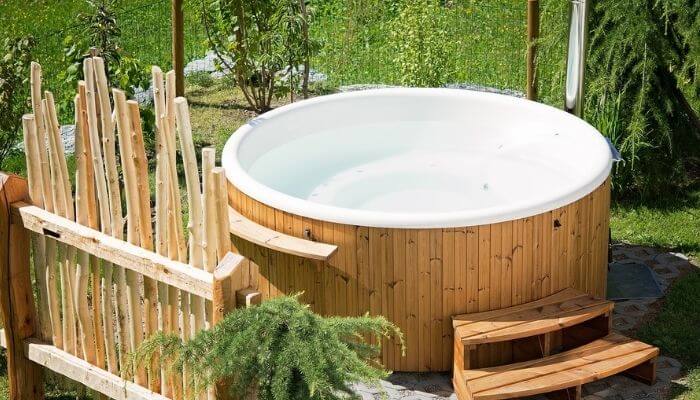
Every outdoor space is different. Every owner has a different style, and every backyard has different needs. Some people want to indulge in their hot tub. Some people like to enjoy a calming ambiance. Light plays a special role in these areas.
Then you also may need lighting for very practical purposes. For instance, you may need to keep some security lights ready. There may be some hazardous areas to walk in, so you’ll want to grab some deck lights or path lighting. Lighting is not something to be overlooked.
When choosing lights for your outdoor living space, get the type of lighting that is best suited for the need (safety, security, decoration, or display) and best suited for the space you have available to put it. Also, ensure they are waterproof, powered the way you need them, and LED.
Let’s look at some of the lighting available for your outdoor living space, and you can choose what best suits your style and needs.
What to Look for in Basic Outdoor Lighting

Illumination is Important
Lighting is mainly used for illumination of the landscape or decorative purposes, for being able to navigate the area, and for deterring criminal activity. For lighting in which you need to see clearly – security or path illumination – it’s best to go with cooler colored bulbs that are a bright white or mimic daylight. When it comes to decorative or “mood lighting,” you probably want to stick with soft white or warmer colors for your bulb’s output.
Is it Waterproof?
It would be best if your lighting were waterproof. Why is waterproof lighting best? If the lighting is outside or even near the outdoors, it can be a victim of rain, severe weather, or even dew or fog. Being waterproof is just an obvious requirement when dealing with electrical currents and moisture. Always choose waterproof lighting fixtures.

Rechargeable, Traditional Electrical, or Solar?
Which is best? It all depends upon your needs and the location of your lighting compared to the availability of an electrical source and ground. It may also depend upon if you want to go greener.
If you use solar power, you also need rechargeable batteries. Yes, even solar lights run off of a battery. Solar light batteries store energy from the sun. The photovoltaic arrays in the panels collect the sun’s rays and convert them into DC. The current is then stored in the rechargeable batteries to power up the lamps at dusk.
Solar lights use one of two batteries: NiCd (Nickel Cadmium) rechargeable battery or NiMH (Nickel Metal Hydride) rechargeable battery. I suggest going with the NiMH because they hold twice the charge.
If you try to use regular alkaline or disposable batteries in a solar device, it will only work for a short period of time. The battery does not hold a charge like a rechargeable battery made for solar does. Instead, it runs off of a chemical reaction.
For places where you wish to put solar-powered lights near your plants, check out my article on how they could be bad for plants.
If you’re using traditional electrical power, you don’t have to worry about the slow degradation of your light output. The voltage remains higher and constant, so your lighting will be brighter and will burn for as long as you need it to. They may have more maintenance to be aware of, but the replacement bulbs are simple to install, and electric lighting comes in a wide variety of shapes and sizes.

Boost’s Tips
Remember that you can often use solar-charged lighting, even if the area you have the lights in is partially shaded. How? Because usually, the lights can hold enough charge to stay on at least a few hours past dusk, or you can get a remote solar panel stationed somewhere that receives a lot of direct sunlight.
Are LED Bulbs a Good Choice?
Why should you always choose LED bulbs over all others? LED lights use less energy than standard incandescent or halogen bulbs. So you can leave them on for long periods without significantly impacting the electric bill. They also do not overheat.
String Lights

These lights are soft, low-voltage accent lighting consisting of a long electrical cord with small bulbs placed at regular intervals. There are standard string lights, hanging filament string lights, and fairy lights. They’re usually strung over or around an outdoor living space or on the eaves of a home or outdoor structure and can be hung without using nails.
I love these kinds of lights because they add a flair for the dramatic to any outdoor space. At the same time, the light isn’t harsh and can be suitable for enjoying social time with friends and family.
The lights that we purchased and are planning to use in our outdoor space are the Govee Smart Outdoor String Lights.
Wall Lights

I break wall lights into two kinds – sconces and lanterns. These kinds of lights are usually used in recessed areas or near doors. They can be mounted to any vertical surface – like the columns of a pergola, gazebo, or wall on the back of a house.
Lanterns are the more decorative of the two. They are essentially accent lighting that can be mounted semi-flush to the wall. They usually have a glass and metal decorative outer frame with an arm that holds it attached to the wall.

Boost’s Tips
Choose lanterns that have translucent glass and not clear glass. That way, the light is softened and diffused by the glass. It provides a much warmer decorative glow to its surroundings and no glare.
Most lights near an exterior door are considered sconces. Sconces are open-bottomed wall lights made specifically to cast their light downward more than outward. These are usually semi-flush but can also be found flush against a wall. A great option is the LUTEC Cuba LED Wall Lantern.
Deck Lights

These kinds of lights are made to help guide people safely at night. They are there to keep people from hitting trip hazards and are usually placed in available recesses and grooves – so they’re out of the way and don’t become a trip hazard themselves!
Sometimes these lights are also used like well-lights to accentuate things in a garden. But they get their name from being placed along the perimeter of decks or outdoor staircases, sometimes even on each step.
My suggestion for solar deck lights is the SUNFACE Solar Deck Lights.
Path Lights

This kind of lighting is explicitly made to brighten landscaping and walkways through the landscaping. These lights are usually mounted atop small stakes that can be driven into the ground where you need them. They are low voltage and sometimes solar and often LED.
My recommendation is the BEAU JARDIN 8-Pack Solar Lights.
Spot Lights

These are also known as landscaping lights. Why? Because they are usually used to highlight certain features in your landscaping or for showcasing decorations on your lawn.
Bullet-shaped spotlights are used for pointing toward taller items. Adjustable, bullet-shaped spotlights shine light at the angle you need for longer distances.
Well-lights are the smaller round lights that stay flush with the ground to spotlight shorter features in the landscaping. They’re placed near the main feature of a yard or garden, and the light shines automatically upward. An excellent option for some solar-powered spotlights is the InnoGear Solar Lights.
Security Lights

These lights are there to deter criminal activity or scare destructive animals around your property. You want them to be bright and cast a wide beam. I recommend a motion-sensing floodlight on the outer walls to augment the sconce lights you should leave on at your entryways.
The Lightdot Solar Powered Outdoor LED Flood Light is an excellent option for security lights.
In Conclusion
Regardless of which types of lights you decide to put in your outdoor space, you will increase your home’s curb appeal and safety. Landscape Lighting may also increase the value of your home.














